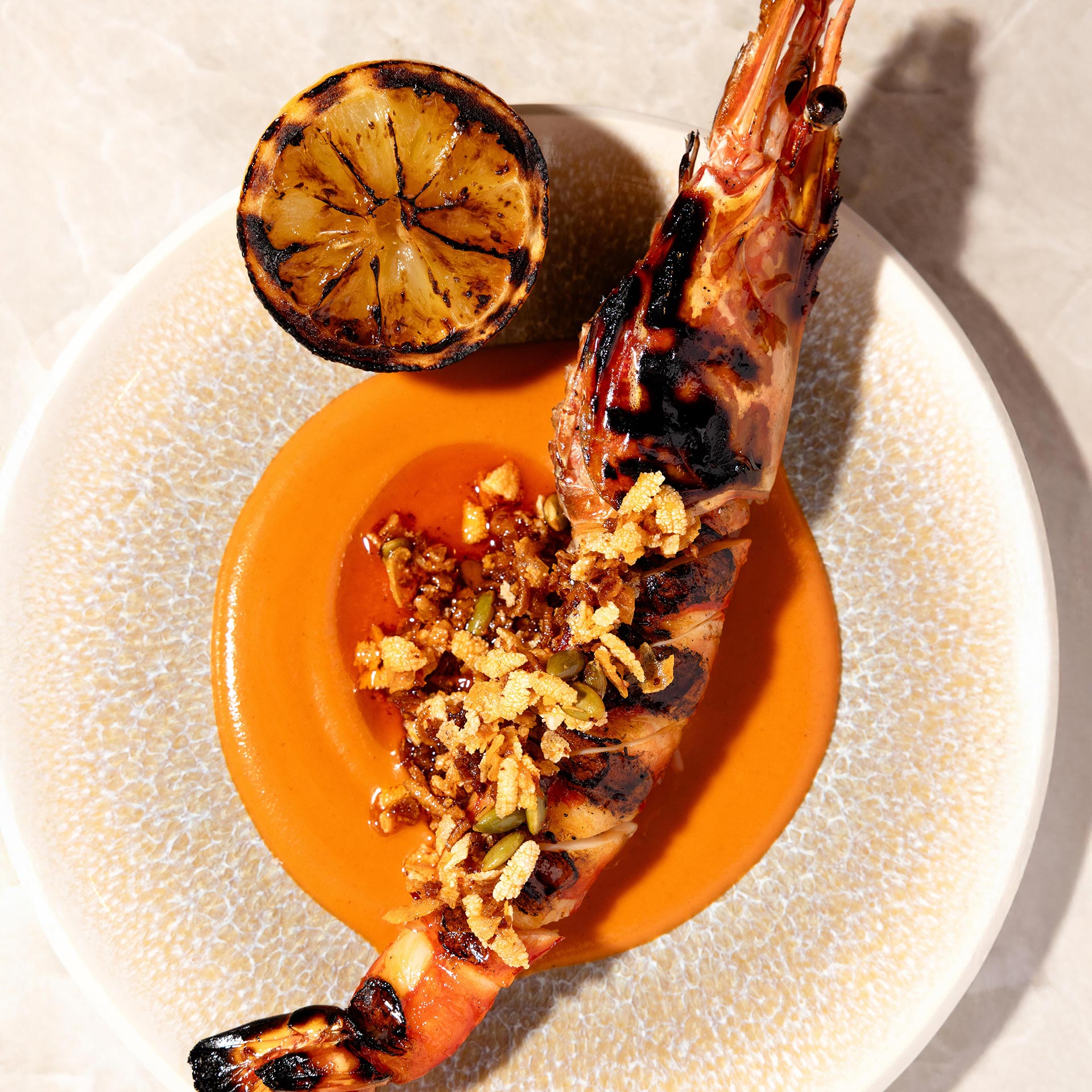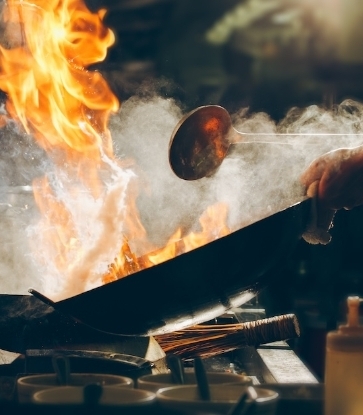Every winter, the northeast monsoon wafts two things back to Hong Kong: puffy down jackets at 20°c and tens of thousands of threadfin fish.
From around late October to February, schools of threadfin rendezvous at Ma Wan Channel under the Tsing Ma Bridge to spawn. It’s the time when threadfin is the fattiest, its flake buttery soft and sweet.
Fishermen and anglers affectionately call the area the “horse track” and the season the “horseracing season” – a wordplay on threadfin’s Cantonese name Ma Yau, directly translated as Horse Friend.
“In Cantonese, we have a saying, only eat when it’s the best in season. Threadfin is a particularly nice ingredient in wintertime,” says ArChan Chan, head chef of Ho Lee Fook.
At Ho Lee Fook, you’ll find steamed threadfin with chicken oil and Shaoxing wine on its winter menu.
Few other fish marry the richly flavoured chicken oil and Shaoxing wine sauce as well as threadfin, making the oily fish a hearty crowd-pleaser for the cooler weather.
“Winter threadfins are a lot bigger in size, they can go up to 10 to 12 kilograms,” Vicky Lau, owner and chef of two-MICHELIN-starred Tate Dining Room and Mora, says.
At Mora, Lau’s new soy-focused restaurant, a delicately balanced Crispy Threadfin is featured with Tofu Skin and Fish Fumet in one of its tasting menus.
To make the dish, the fish is first cured in salt for one hour, then dried to further reduce its moisture and heighten its flavours.
The fish skin is then seared till crispy, but just enough to leave its flake moist and tender.
“The fat of the fish melts into the soy milk broth. It helps to intensify tenderness and umami flavour,” Percy Ho, head chef of Mora explains.

Hong Kong ma yau: East Asian four-finger threadfin
But not all kinds of threadfin are the same.“Threadfin is often distinguished by the number of thread-like rays at its lower pectoral fins (under the fish belly). These are like its fingers that help it sense the surroundings,” Chong Dee Hwa, founding president of the Ichthyological Society of Hong Kong (ISHK), tells MICHELIN Magazine.
Born in Japan, Chong has found his passion for fish since moving to Cheung Chau, the quaint fishing island village in Hong Kong in the 70s.
He founded HKIS – a non-profit academic platform that improves and promotes studies and knowledge of fish – in 2008, dedicating his time to do research on the city’s rich marine creatures with a group of scholars.
According to Chong, there are four main types of threadfins you can find in Hong Kong’s wet markets, but the most common ones are Fourfinger Threadfin (or Eleutheronema tetradactylum) and East Asian Fourfinger Threadfin (Eleutheronema rhadinum).
Fourfinger” suggests that it has four thread-like rays under the belly.
Not all threadfins available in the market coms from Hong Kong’s waters these days. Fourfinger Threadfin is the most commonly farmed threadfin, imported from Taiwan and mainland China. They breed mostly in April and May. Some of the wild ones can grow up to two meters in length.
“That’s why the ones we usually see in the market are teenage threadfins – around one catty (600 grams),” says Lai Nok Wai, Committee Member of ISHK.
Wild threadfins in Hong Kong are mostly East Asian Fourfinger Threadfin. Matured East Asian Fourfinger Threadfin could be about 80 centimetres long and breed in autumn and winter.
“It’s absolutely correct to say that threadfin is a local species, proven by the fact that it was one of the most popular fish to be made into salted fish throughout Hong Kong’s history,” says Lai.
Chefs and discerning diners will tell you that wild threadfin is preferred over the farmed one – but how to distinguish between the two?


How to distinguish farmed threadfins and wild threadfins
“Some think that they could tell the two apart by the colours of their fins – black pectoral fins for the wild threadfins and yellow fins for farmed ones. But it isn’t entirely true.“Fishes, like humans, have moods. They may change their fin colours according to their moods and surroundings. While East Asian fourfinger threadfins do mostly have black fins, farmed Fourfinger Threadfins could have either black or yellow fins,” says Lai.
A more technical way of identifying the fish is by counting the number of scales on its lateral line.
But even if you know what a lateral line is, it may be difficult – and very time consuming – to do so under the watchful eyes of fishmongers in wet markets.
“That’s why the easiest way is to observe its tail,” Lai continues. “Farmed threadfins are generally fatter than wild threadfins. Instead of just looking at a fish’s belly, which could be deceiving, we look at its tail. A wild threadfin has a longer and leaner tail than a farmed one.”
READ MORE: 5 Restaurant Trends For 2023, According to MICHELIN Chefs


Local threadfin: ‘Just like Wagyu beef’
The city has had a long love affair with threadfin.But its image has evolved in recent years, from an old-timey dish – mostly as salted fish – to a rising hot ingredient in modern high-end restaurants, especially amongst local chefs.
“Threadfin is my favourite local fish to use – there are many delicious fresh fishes in the area that are amazing too, but I like threadfin because it is so well-marbled and fatty. When you slice it open, you can see the marbling just like Wagyu beef,” says Vicky Cheng, owner-chef of VEA and Wing.
Covid restrictions are part of the reason.
As it has been harder and much more expensive to import fresh fish from around the world in the last few years, it has encouraged more chefs to turn to local ingredients.
Many chefs around the world have also been more keen to source locally and sustainably to reduce carbon footprint.
“I’m happy that restaurants are noticing this amazing product coming from the waters so close to us, right here in Hong Kong – a lot of the time it’s just coming from underneath Tsing Ma Bridge.
“I think many chefs are paying a lot of attention – now more than ever – to being sustainable and using local. Naturally not everything locally sourced is always nice. But this fish is definitely one of the top options,” says Cheng.
HKIS’s Chong agrees that threadfin is one of the more sustainable fish we could consume.
“We look at whether there is a steady supply of a fish – from farms and in the wild. We also work closely with fishermen and observe market supplies to monitor the ups and downs of various fish species,” says Chong.
And fortunately, there is still a healthy supply of threadfin at the moment.
The group hopes to work more on sharing information on ocean sustainability with the food and beverage industry in the future.


MICHELIN chefs’ favourite ways to eat threadfin
Lau and Ho of Mora say that threadfin is a great and easy ingredient to cook thanks to its steady supply, high nutritional value, gentle taste and rich fragrance.Their favourite way of cooking it is by steaming it, Cantonese style.
“You can taste the freshness and enjoy all the natural flavours of the fish,” the duo say.
Chan also applauds the fish’s versatile nature.
“You can pan fry it, steam it with black pean and preserved vegetables or even with ginger, spring onion and soy. There is a dried version in the market – ichiya-boshi, or ‘dried overnight’ in Japanese – that you could pan-fry, grill or bake. They make a nice snack throughout the day or with beer,” says Chan.
Threadfin dishes regularly appear on both of Cheng’s restaurant menus.
Cheng prefers big threadfins that are over six kilograms. Different parts of the fish are ideal for different types of cuisines.
The silky and boneless centre cuts are used in VEA’s western dishes.
The parts of the fish that are always cooked on the bone, like the belly, are used at WING, Cheng’s modern Chinese restaurant.
“The part that is served with bones attached is considered the best part of the fish, as its marble is packed with collagen and more flavourful,” Cheng explains.
But many Hong Kongers may echo ArChan Chan’s favourite memories of threadfin – when the nostalgic scent of salted fish transports her to her childhood.
“Threadfin was not something we ate fresh when I was growing up, we had it in the salted and dried form. Sometimes when we visited my grandparents, we’d get the good quality salted threadfin and enjoy a simple steamed, salted threadfin over rice. The fatty nature of the fish is why it gets picked to be made into salted fish. Throughout the process of salting and drying, the fat transforms into a delightful savoury flavour full of umami,” remembers Chan.
READ MORE: Restore your yin and yang: The extraordinary Cantonese soups from Hong Kong MICHELIN restaurants
This article is written by Maggie Hiufu Wong for MICHELIN Guide Hong Kong and Macau.
Hero image provided by Wing restaurant.





















